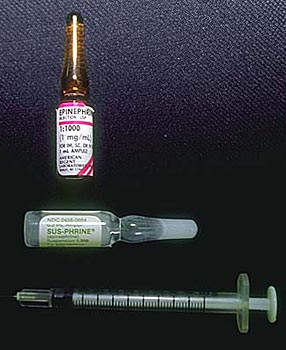Latex allergy is diagnosed with a thorough medical history, physical exam, and tests. Tests may include a blood test to detect latex antibodies and glove-use tests and skin tests to detect an adverse reaction to latex exposure. Glove-use tests and skin tests should always be done by health professionals who are experienced and equipped to respond to a serious reaction.
How is it treated?
Some medications may help reduce the allergy symptoms, but complete latex avoidance, though difficult, is the most effective treatment. Serious reactions may need to be treated in a hospital emergency department.
If you have had a previous serious reaction to latex, you should carry and know how to use an allergy kit, which contains an injection of epinephrine.

How can I avoid using products containing latex if I have a known latex allergy?
- Avoid any skin contact with latex products. Health care workers should use hypoallergenic nonlatex gloves.
- Avoid breathing the air where powdered latex gloves are being used. The latex particles in the gloves stick to the cornstarch used to powder the gloves. When the cornstarch flies through the air, it can be inhaled, causing a lung reaction.


